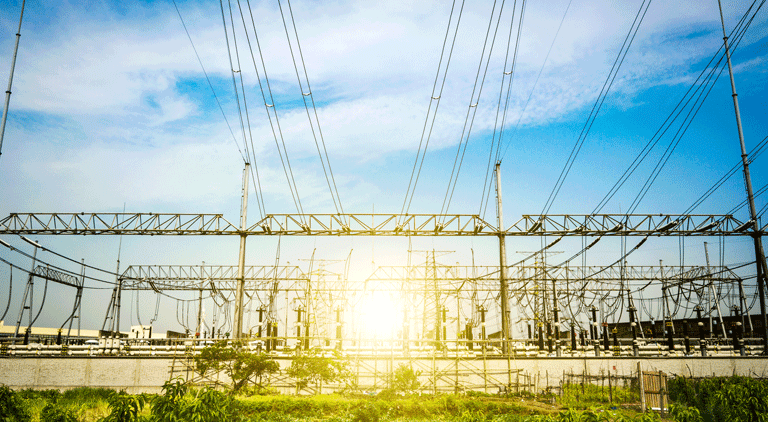Integrated intelligence for smart power substations
By EPR Magazine Editorial December 11, 2019 5:35 pm IST
By EPR Magazine Editorial December 11, 2019 5:35 pm IST

Industry leaders chalking out various impending requirements that can revamp the operational methodology and cater better distribution at power substations.
Electricity has become essential for modern life. Practically, like air and water, electricity has become a basic requirement. We require it to run our houses, water supply, lights, fans, domestic appliances, lifts, TV, internet, communication, transportation, hospitals, offices, schools, colleges, industries, infact everything connected with day to day life.
In India commercial use of electricity started in 1891 though it picked up after independence due to large number of thermal and hydro power stations set up in the public sector. The power generation capacity in India has increased from 1362 MW in 1947 to more than 4, 00,000 MW in 2018.
Functional improvement in power substations
The major initiative in these directions covers automation of Substations, using communication capable relays and FRTUs (Feeder Remote Terminal Units) which give real time updates on the healthy / fault status and can initiate a manual or automated response to overcome the faults thereby ensuring continuity of power.
One of the important aspects of power to all requires reliability of the power, which covers across generation, transmission and distribution. The second initiative of decentralisation of power distribution and creating a robust ring type secondary distribution network with the use of underground cable systems and Ring Main Units (RMUs) bring the distribution centre closer to the customer, thereby reducing the losses and also ensuring availability at all times. Noting these aspects, Ripunjay Parikh, Director Sales – PD, Eaton Power Quality Pvt. Ltd “The use of Smart RMUs (enabled with FRTU) helps the utilities to have real time monitoring of the continuity of power and enables them to even identify the nature of faults and the location resulting to prompt response. Moreover, the strong implementation of renewable power (especially solar) has created a stronger sustainable and affordable power system and grids which helps address peak loads. Few progressive utilities also are using intelligent systems with positive interlocks, which ensure added operator safety in their substations.”
Government in itself has taken large number of initiatives in terms of schemes like IPDS, DDUGJY, Saubhagya scheme which were center funded and with direct monitoring from center government may achieve its ambitious target of electricity for all by 2020 but again the quality, duration, affordability and reliability remains a big concern in rural areas. Saurabh Patwari, CEO, National Electrical Equipment Corporation here highlights the government initiatives and says “Government has tried to reduce the payment cycle, but still it has its limitations. Still high upfront cost and lack of awareness on many parts of our country is the major reason for consumer not to take the connection. Further improvement of supply situation (duration) is poor in many states hence strengthening of infrastructure, managing load should be prime concern of discoms. Furthermore pre paid metering and other innovative models can help solve the problems. But ultimately it’ll boil down to honesty of consumers and reduced losses in future for sustainable power supply for all.
The Governments Mission “Power for all 2020” is indeed a multi pronged strategy envisaging the energy demand of an rapidly developing nation. The framework of the initiatives and schemes have certainly enhanced distribution network in varied sectors. According to Visweswara Reddy, Managing Director, SSEL Ltd “Unreliable supply and load shedding are key major aspects, which were to be addressed, and the schemes have provided a diligent opportunity to revive the existing network.”
Possible infrastructural slips
The use of EHV and HVDC systems are resulting in lower losses and more reliable power over long distances and reaching all the ends of the country. The next initiative is to how we create a secondary distribution grid or network that can be made available to the users. Smart cities initiative is also motivating the cities to implement the modern network system designs using Smart RMUs. Today the RMUs use SF6 gas based insulation in the switchgear, which makes them economical, however can result into hazard to the environment, in the event of accidental leakages of the these greenhouse gases. On this note, Parikh says “Very little technological advancement in this field, higher system costs and the apathy of the utilities towards environmental issues is resulting in slower pace of acceptance of these technologies.”
Slightest technological advancement in this field, higher system costs and the apathy of the utilities towards environmental issues is resulting in measured technological acceptance.
Ripunjay Parikh, Director Sales – PD,Eaton Power Quality Pvt. Ltd
Pre paid metering and other innovative models can help solve the problems. But ultimately it’ll boil down to honesty of consumers and reduced losses.
Saurabh Patwari, CEO, National Electrical Equipment Corporation
“Faster ramping, flexible generation combined with an improved grid system will be the key reduce India’s growing dependence on expensive imports of high-emission fossil fuels.
Visweswara Reddy, Managing Director,SSEL Ltd
We use cookies to personalize your experience. By continuing to visit this website you agree to our Terms & Conditions, Privacy Policy and Cookie Policy.